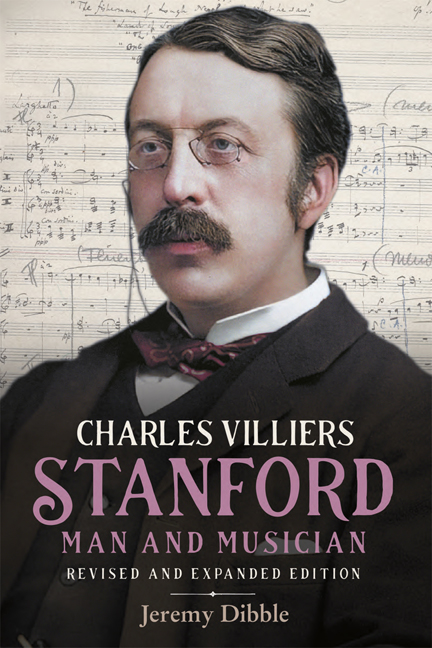Book contents
- Frontmatter
- Dedication
- Contents
- List of Illustrations
- List of Music Examples
- List of Analytical Tables
- Preface and Acknowledgements
- Supplementary Introduction to the Revised and Expanded Edition
- List of Sigla and Abbreviations
- I Early Influences and Impressions, 1852–70
- II Formative Years, 1870–87
- III Recognition, 1888–1901
- IV The New Generation, 1901–14
- V War and Decline, 1914–24
- Appendix: List of Works
- Select Bibliography
- Index of Works
- General Index
- Irish Musical Studies Previous volumes
12 - The Last Years (1918–24)
Published online by Cambridge University Press: 12 May 2024
- Frontmatter
- Dedication
- Contents
- List of Illustrations
- List of Music Examples
- List of Analytical Tables
- Preface and Acknowledgements
- Supplementary Introduction to the Revised and Expanded Edition
- List of Sigla and Abbreviations
- I Early Influences and Impressions, 1852–70
- II Formative Years, 1870–87
- III Recognition, 1888–1901
- IV The New Generation, 1901–14
- V War and Decline, 1914–24
- Appendix: List of Works
- Select Bibliography
- Index of Works
- General Index
- Irish Musical Studies Previous volumes
Summary
On 7 October 1918, a month before Armistice, the death of Parry was announced. For Stanford the news came as a terrible shock. Though they had been on better terms since their row in early 1917, both men undoubtedly still felt bruised by their earlier differences. Parry's death unfortunately prevented Stanford from delivering his masterly Magnificat in B flat Op. 164 for a cappella double choir (finished in September 1918) to his old friend, which only added to the composer's state of grief. This fine, and often-performed work (though a challenge to the best of choirs), in many ways paid tribute to Parry's stature as a choral composer. The double-choir scoring acknowledges the close link between Blest Pair of Sirens and the two men, and, at the same time, its clear reference to Bach's effusive eight-part ‘Singet dem Herrn ein neues Lied’ (which Stanford conducted numerous times) and his own Magnificat (to which Parry had also expressed his open reverence in his choral Magnificat of 1897) honoured Parry's devotion to Bach both in his music and his study of the composer of 1909. Stanford's remarkable setting is, like much of his service music and anthems, symphonic in scope, but here the treatment of the text is much more expansive and not confined by the usual constraints of the Anglican liturgy. One is immediately aware of this in the generous and rhythmically dynamic tripartite opening section and in the four contrasting movements that follow in E flat (‘Qui a fecit mihi magna’), C minor (‘Fecit potentiam’), and D flat (‘Esurientes implevit buonis’) before B flat is restored with the final verse of text (‘Suscepit Israel’) in a splendid gathering of momentum from an initial pastoral mood to a buoyant, climactic ‘alla breve’. And to reinforce this return to the tonic, Stanford recalls the opening material in a more truncated form, using the text of the doxology. The concluding ‘Amen’, furthermore, is one of the composer's most thrilling in its sudden epigrammatic divergence to G flat directly before the spacious final cadence.
With the help of his friends, such as M. R. James, Parratt and Arthur Balfour, Stanford was able to press home his desire to see Parry buried in St Paul's Cathedral and to hear his own anthem, ‘I heard a voice from heaven’, sung at the memorial service on 16 October.
- Type
- Chapter
- Information
- Charles Villiers StanfordMan and Musician, pp. 557 - 606Publisher: Boydell & BrewerPrint publication year: 2024

